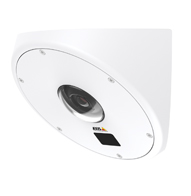Johan Paulsson, Chief Technology Officer at Axis Communications identifies and discusses the technology trends that look set to affect the security sector in 2020 and beyond.
With the start of a new year comes the opportunity to reflect on what we have learned over the past 12 months and to begin to think about what the future might hold. It’s an exciting time for the security industry. Digital transformation continues to alter the focus and scope of products and services, which need to remain current and relevant to continue to meet changing customer requirements as the industry goes through a period of seemingly continuous evolution.
As existing technologies reach maturity and innovations make the leap from consumer applications to business, and vice versa, it’s imperative that we constantly seek to find those that have the potential to add value and drive positive change. By taking a forward look at the rapidly shifting landscape we can begin to make predictions about the many upcoming developments and how they might impact on business operations in the coming months.
Growth
We are seeing a growing movement towards computing at the ‘edge’ of the network. Many connected IoT devices require or would benefit from the ability to analyse received data, make a decision and take appropriate action without the need to constantly send and receive data back and forth to the cloud for processing.
Autonomous vehicles are an obvious example where split-second decisions need to be made without unnecessary lag, whether in relation to communications with the external environment or through sensors detecting risks. It is the same with video surveillance. If we are to move towards the proactive rather than reactive, more processing of data and analysis needs to take place within the camera itself.
Processing power
Dedicated and optimised hardware and software, designed for the specific application, is essential with the move towards greater levels of edge computing. Connected devices will need increased computing power in order to process information quickly and accurately in an increasingly connected world. This also means that devices will need to be increasingly cybersecure, lessening the chance of their use as a backdoor to compromise a network.
Cybersecurity can only be guaranteed by designing technologies for purpose from the ground up in accordance with a security first mindset. These technologies should be manufactured by providers with the appropriate cybersecurity credentials who offer full support and aftercare, for comprehensive coverage and complete customer peace of mind. This will ensure that, as these devices grow in power and prominence, they are created with cybersecurity as an integral factor in their make-up rather than an afterthought.
Issues around personal privacy will continue to be debated around the world in 2020. While technologies such as dynamic anonymisation and masking can be used at the edge to protect privacy, attitudes and related regulations are inconsistent across regions and countries. The need to navigate the international legal framework will be ongoing for companies in the surveillance sector.
With more processing and analysis of data taking place in the devices themselves, the need for greater emphasis on cybersecurity to more effectively protect people, premises and assets will become ever more critical. Worryingly, many organisations are still failing to undertake even the most basic firmware upgrades, which points to the fact that further education is needed around the importance of taking cybersecurity seriously.
Regulations around technology
Regulations are struggling to keep pace with advances in technology, and perceptions around their use can vary depending on how the ‘use case’ is presented. Facial recognition, for example, when used at an airport may be praised for its ability to help passengers board a plane quickly and safely, but when used to monitor citizens in busy shopping mall, the capturing of images may be regarded as an invasion of privacy.
Attitudes towards appropriate technology use cases and the regulations that govern them differ around the world. It’s a dynamic landscape that the industry will need to navigate, and where business ethics will continue to come under intense scrutiny as pressure mounts on organisations to prove that they’re doing the right thing as the technology and its abilities advance.
Network diversity
While public cloud services remain part of how we transfer, analyse and store data, we are increasingly seeing a move away from the open internet toward the hybrid and private clouds which are growing in use. This comes as a result of today’s regulatory complexities as well as growing privacy and cybersecurity concerns.
Openness and data sharing were regarded as being essential for AI and machine learning, yet pre-trained network models can now be tailored for specific applications with a relatively small amount of data. As an example, at Axis we have been involved in a recent project where a traffic monitoring model trained with only 1,000 photo examples reduced false alarms in accident detection by 95 per cent.
There are plenty of interesting developments and much food for thought here. One thing is for certain, there is enough to keep us busy over the coming months as we apply ourselves with renewed vigour to the challenges that the new year will bring.
To discover more of Axis’ trends for 2020, visit: https://www.axis.com/blog/secure-insights/5-technology-trends-2020/.










